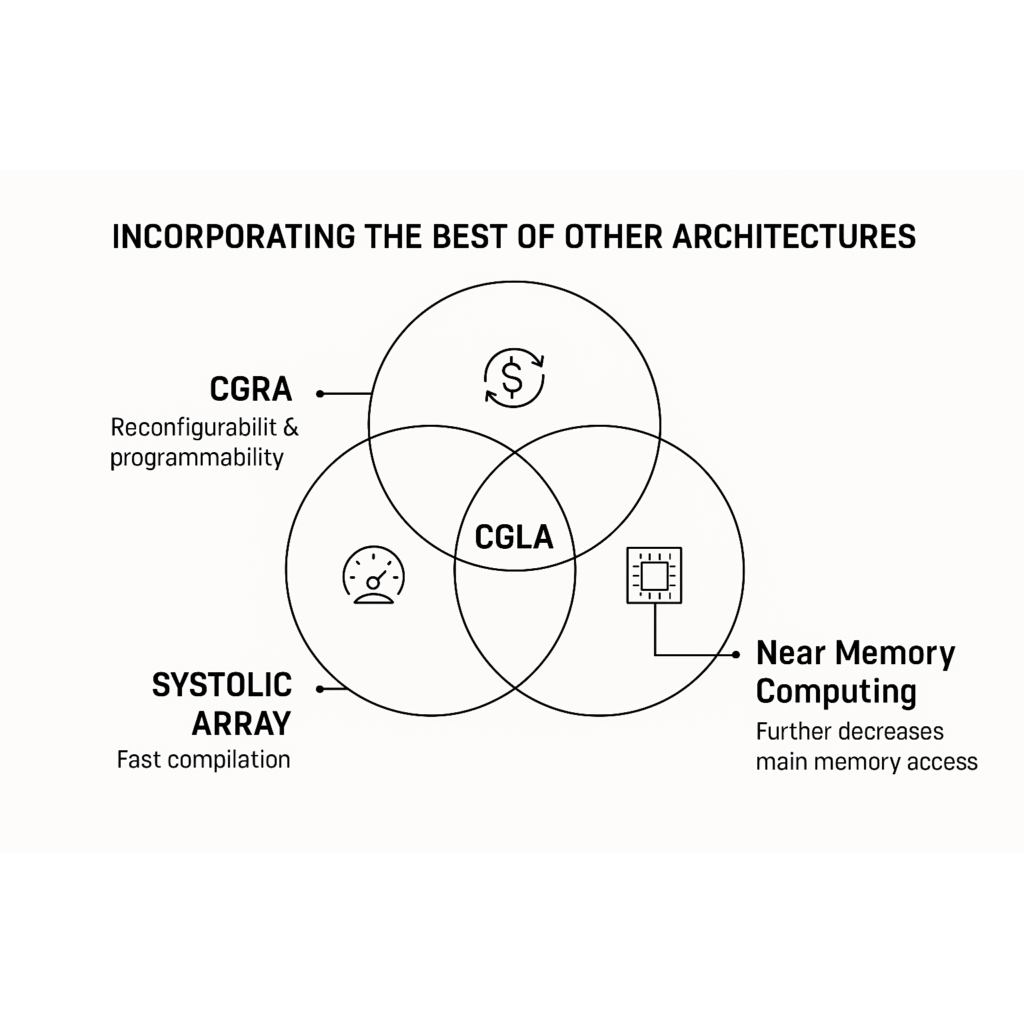In recent years, the evolution of AI has shown no signs of slowing down. Supporting this AI revolution are specialized "AI chips" designed specifically for AI computations. Lately, a growing number of startups developing new AI chips have adopted an architecture called "CGRA."
However, an architecture that solves the major challenges of CGRA and takes things a step further—"CGLA"—remains largely unknown.
This article will explain the difference between CGRA and CGLA for beginners in the semiconductor field, and introduce the advantages and features that give CGLA the potential to dominate the AI era.
What is a CGRA?
Let's start with the basics. What is a CGRA?
In a nutshell, a CGRA (Coarse-Grained Reconfigurable Array) is like a "computer made of LEGO blocks that can be reshaped to fit the program."
If a general-purpose CPU is a "universal factory that can handle any calculation," then a CGRA is like a "specialized factory whose production lines (computing circuits) can be freely reconfigured to make a specific product (perform a specific computation)."
By arranging numerous small processing units and changing their connections according to the program, a CGRA can execute specific tasks like AI image recognition or data analysis overwhelmingly faster and with less power than a CPU.
This is why many AI chip startups are focusing on CGRA. However, this "reconfiguring the production line" process has a major weakness.
The "Major Weakness" of CGRA
The weakness of CGRA is its "compilation time."
Compilation is the process of converting a program written by a human into a blueprint that the hardware can understand. For a CGRA, this is equivalent to figuring out the optimal layout of the production line to achieve maximum efficiency.
Finding the best placement and connection scheme for countless units is like solving an incredibly complex puzzle. As a result, it's not uncommon for CGRA compilation to take several hours, sometimes even more than a full day.
This means that every time you want to try a new AI model or make a small change to a program, it becomes a day-long affair. This is a critical flaw in today's world, where development speed is everything.
Enter the Savior: CGLA
This is where CGLA (Coarse-Grained Linear Array) comes in. As its name suggests, it's an architecture where processing units are connected in a linear—or ring-like—fashion, packed with innovative ideas that solve CGRA's challenges. The "IMAX" from NAIST, mentioned frequently in our chat, is a prime example of a CGLA.
CGLA's Advantage #1: Compilation Time in "Seconds"
Why is CGLA so fast to compile? The secret lies in its namesake "linear (ring-like)" structure.
- CGRA: Units are arranged in a complex 2D grid, making it very difficult to find the optimal routes.
- CGLA: Units are connected in a simple ring (linear) structure, which eliminates the need for the compiler to search for complex routes, making the program "mapping" process extremely easy.
This dramatically reduces compilation time from hours to just a few seconds. For developers, this is a revolutionary change.
CGLA's Advantage #2: The Pipeline "Never" Stalls
The biggest drain on a computer's performance is the "pipeline stall," which occurs when the process has to wait for data.
The CGLA (like IMAX) uses the dataflow principle and multithreading technology within its units to eliminate stalls by design.
This is like a factory production line where parts always arrive at the worker's station at the exact moment they are needed. Because the hardware continues to operate without any waste, it maintains extremely high computational efficiency.
CGLA's Advantage #3: Thoroughly Energy-Efficient Design
Moving data is a major source of power consumption. The CGLA (like IMAX) places a large cache memory right next to each processing unit.
This is like each worker on the assembly line having their own personal, large toolbox and parts bin. Since there's no need to constantly walk to a central warehouse for parts, data movement is minimized, leading to significant energy savings.
Summary: CGRA vs. CGLA
|
Feature |
Typical CGRA |
CGLA (e.g., IMAX) |
|---|---|---|
|
Unit Connection |
Complex 2D Mesh Structure |
Simple Linear (Ring) Structure |
|
Compilation Time |
Hours to 1+ Day |
Seconds |
|
Pipeline Efficiency |
Prone to Stalls |
Stall-less |
|
Memory Structure |
Frequent access to shared memory |
Local cache per unit, minimal data movement |
|
Development Efficiency |
Low |
Extremely High |
As you can see, CGLA is truly a next-generation architecture that refines the CGRA concept and solves its practical challenges.
While startups using CGRA are making waves in the AI chip market today, more advanced technologies like CGLA are steadily moving towards practical application. The day that CGLA—with its combined development efficiency, execution efficiency, and energy savings—becomes the standard for future AI chip development may not be far off.

